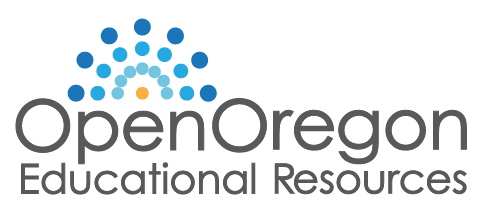Question: I’m a new librarian hire at an institution where responsibility for open education on campus is shared by the library and another unit. How can we define roles and foster collaboration?
OER programs often live in the library, and unfortunately it’s also common for the work to fall to just one person regardless of which unit takes the lead. As the field grows, though, there are starting to be a few organizations with more than one open ed position across more than one department. So while this may be a good problem to have, it is new – which means that there are very few models to follow.
Tacoma Community College is the first institution that I knew of with a shared model of OER support (in this case in the eLearning and Library departments), so I consulted TCC’s OER Librarian, Jennifer Snoek-Brown, to find out what their practices are. Jennifer told me that when she was hired, she started out by seeking informational interviews with OER librarians at other institutions (including me – which I considered to be paying forward the informational interview that Quill West at Pierce Community College did with me when I started my job).
This is indicative of the methodical approach that Jennifer took to her new job. Once she arrived at TCC, she did more talking – with her library director, with the rest of the library faculty and staff, and with other stakeholders on campus including her counterpart in eLearning, whose job title is Instructional Designer & OE Coordinator. She also made it a priority to set up a standing weekly meeting with her counterpart in eLearning so that they could keep each other updated, collaborate on projects, and build trust.
All of this outreach resulted in clearly defined roles that are communicated to faculty via the TCC OER guide (this page was inspired by the Portland Community College OER Guide). The library’s role includes searching for OER in different fields, integrating ebooks into course content, providing training on copyright and open licensing, and creating instructional learning objects on topics like attribution. Jennifer and the Instructional Designer & OE Coordinator also send out joint quarterly communications and share an OER support email address in order to emphasize that while they have their own spheres, they work cooperatively and can help direct any faculty member to the help they need.
At the same time, Jennifer is also the OER librarian for her library colleagues. OER is a standing agenda item at weekly department meetings in the library, which provides an opportunity to discuss integration of open practices into all library practices. Working internally clarifies how the library’s OER work fits into overall strategy and structure for the library.
Jennifer’s approach is utterly different from mine – as an experiential learner, I tend to follow my nose and figure things out as I go along. The word that she used to describe her approach is “intentionality,” and I think that fits: taking time to fully understand the needs in your new environment before getting started. Actually, the way that Jennifer described it, that’s what getting started is.
Got any additional advice about sharing open ed responsibilities between units? Please leave a note in the comments! Got a thorny problem? Send an email at https://openoregon.org/contact/ and maybe this advice column format will become a regular blog feature!
